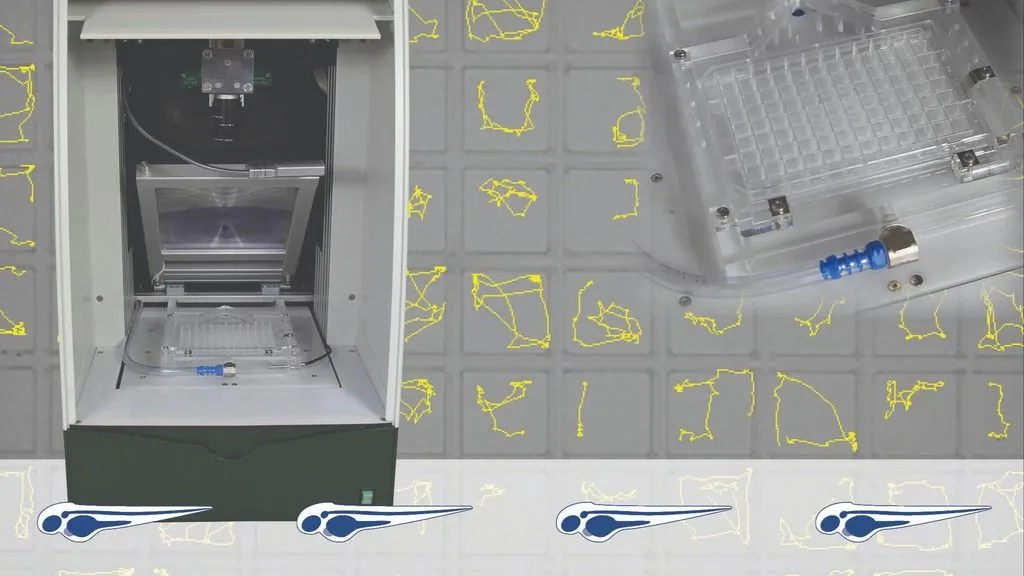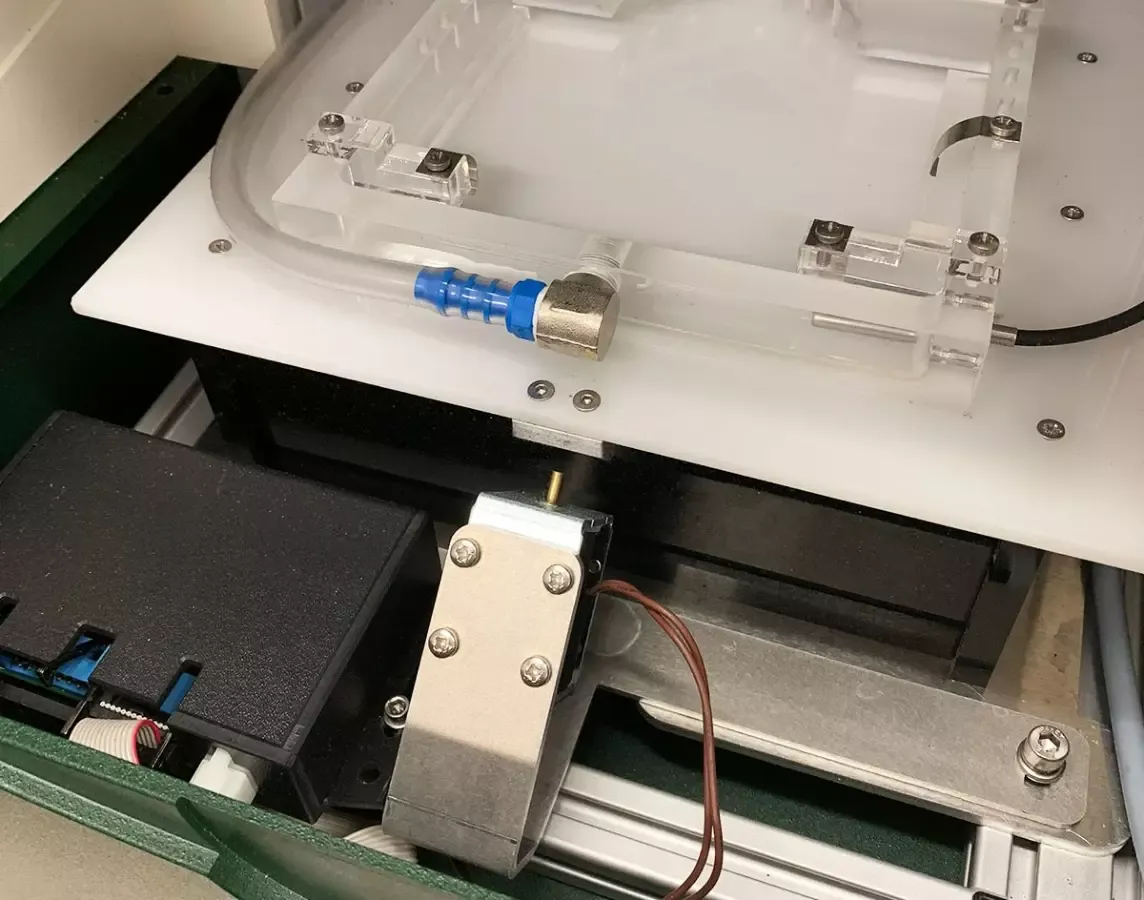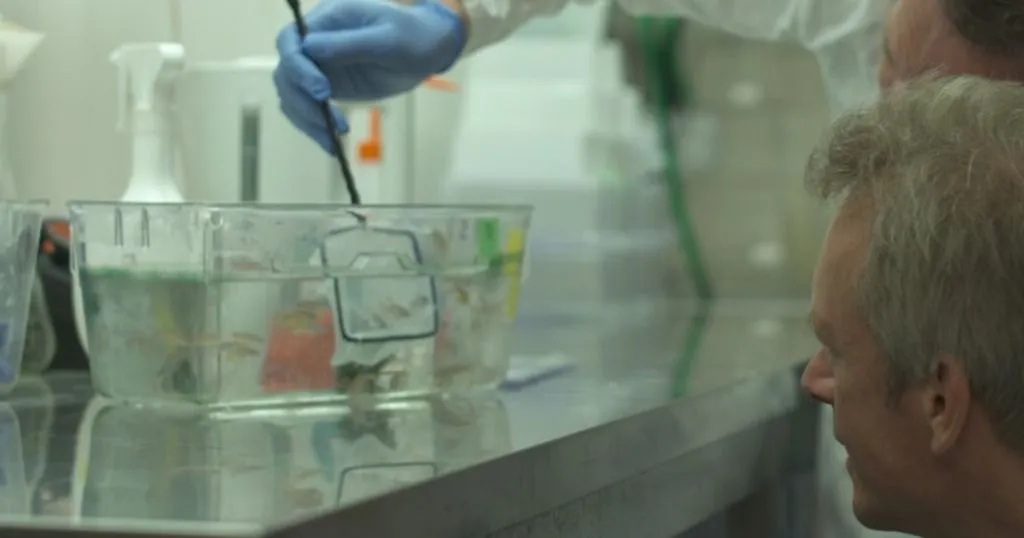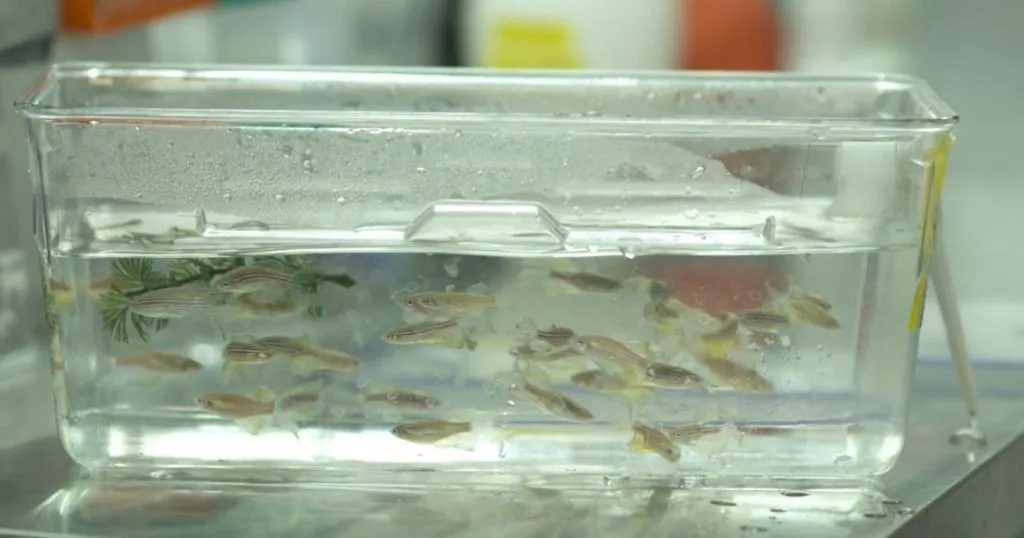What can I use DanioVision for?
Researchers use zebrafish of all life stages, from embryo's to full adults. These researchers do high-throughput research and are therefore in need of a good automated system. DanioVision is the best tool for this type of research.
Posted by
Published on
Tue 18 Nov. 2025
Topics
| Danio Rerio | DanioVision | EthoVision XT | Zebrafish | Neuroscience |

Zebrafish are an often-used model for a variety of applications. They are relatively easily genetically modified to serve as a model for specific diseases or toxins and drugs. This makes them invaluable to the scientific community in all stages of their life.
If you need high throughput testing of zebrafish larvae or other small organisms, DanioVision is the system for you. It has been used for almost 2 decades and has been validated in more than 1500 publications. DanioVision combines an integrated hardware setup with all the benefits of the best video tracker, EthoVision XT.
In this blog we will go over some of the applications DanioVision has been used for. If you have any questions on specific validations, you can always get in contact, and we will help you out.
Drug discovery and safety pharmacology
Zebrafish are more similar to humans than you might think. Therefore, they
are an excellent model to track disease progression and test potential drugs or other interventions. One
such disease is cancer. Zebrafish have been used in Oncology studies as a translational model for over 10
years (Barriuso 2015). DanioVision has been used to study phototaxis assays with cancer model zebrafish
larvae.
Zebrafish are more similar to humans than you might think. In fact, zebrafish share
approximately 70% of their genes with humans, and about 84% of human genes linked to disease have a counterpart in zebrafish.
Toxicology
Zebrafish are an excellent model to test the influence of various toxic compounds on behavior. They are especially often used in eco-neurotoxicology. This field of science focuses on pollutants that can be found in the environment. This can include heavy metals, pesticides, harmful chemicals and much more. Most of these studies research the effect of these compounds on the nervous system of the zebrafish.
An example of behavioral endpoints commonly used in zebrafish (usually in larvae or juveniles) to assess these neurotoxic effects are:
- Spontaneous locomotor activity - Speed alteration tests, overall changes in motility (hyperactivity, hypoactivity), and specific swimming patterns such as thigmotaxis (wall hugging).
- Sensory-motor biotests - The startle response is an example of sensory-motor testing. It is the animal’s defensive reaction to a sudden and unexpected stimulus, such as a sound, vibration, light change, or a moving shadow simulating a predator. You usually see a pronounced increase in non-directional locomotion, often followed by more complex behaviors, such as avoidance or shelter seeking.
Impact of neurotoxic pollutants on learned behaviors
Behavioral assays in eco-neurotoxicology
Aquatic environments face an ever-increasing burden
of the daily, human,
introduction of contaminants. Many of these contaminants have shown to
be neurotoxic or neuro-modulating, meaning that they are harmful for both
humans and animals through contaminated drinking water and accumulation in aquatic
foods. However, this form of pollution should be, and currently is, gaining
awareness considering the impact it has on animal behavior.
This white paper, written in collaboration with Prof. Donald Wlodkowic, an
expert in eco-neurotoxicology, touches upon this subject, and shows how
DanioVision and EthoVision XT can advance your research.
Circadian rhythm
Zebrafish are often used to study the effect of certain interventions on the effectiveness of the day night cycle. Zebrafish can display significant locomotor activities four days after fertilization, because that is when the swim bladder has developed enough to be functional.
After this development has occurred researchers can observe and track the basic locomotion’s of the larvae. In response to light and dark periods (which are preprogrammed in DanioVision) locomotor behavior of the larvae will change. How this change presents itself in relation to certain compounds or interventions is of interest to researchers.
“There is apparently no organ and no function in the body which does not exhibit a similar daily rhythmicity” – Aschoff (Circadian rhythms in man, 1965). Therefore, if an organ or the body is affected observing the behavior for both the light and dark period could give insights into the effects.
With DanioVision you can observe larvae for multiple days. This results in you having a robust and rich dataset.
Epilepsy & seizure modeling
Zebrafish larvae have been used to model various forms of epilepsy, including both genetic and chemically induced forms of the disorder. Researchers can use a variety of techniques to induce seizures in the larvae, such as administering convulsant drugs or exposing them to specific light stimuli and then study the underlying neural mechanisms that drive the seizures.
Impact of neurotoxic pollutants on learned behaviors
Researching Epilepsy models in EthoVision XT
Zebrafish (Danio rerio) have emerged as a premier
model organism in neuroscience research, including epilepsy studies, due to their
genetic manipulability, translational potential, and the feasibility of large-scale
phenotypic screenings.
In this whitepaper we go over how zebrafish are used in tandem with EthoVision XT.
DanioVision can include the so-called tapping device. With this device and EthoVision XT, you can automatically set the timing and intensity of the tapping. This means that every input is controlled and consistent.
Visual and photo-motor responses
There are various tests that involve the ability of the zebrafish to response to external stimuli. One is the previously mentioned startle reflex, but researchers also use light to elicit a behavioral response.
The larval photomotor response (LPR) assay is a sensory-motor biotest performed on freely swimming zebrafish larvae at the age of 5 to 7 dpf. At that developmental stage, fish show stereotypic non-directional light seeking behavior, which is a rapid increase in locomotion in response to turning off the light.
Phototaxis is a directional response to light. It can be positive when the test animal moves toward the light, and negative when the animal moves away from it. Qian et al. (2021) found a significant inhibi¬tion of the phototactic response in zebrafish larvae following exposure to Boscalid, a neurotoxic fungi¬cide.
Startle reflexes or habituation
The startle response in zebrafish larvae is a preserved defense response performed as tail coil. This body-bend is done in reaction to a variety of sensory stimuli. Changes to this response can reflect the effect of neuropsychiatric disorders. Researchers look at in what way and how frequent the larvae perform this startle response as a reaction to standardized stimuli.

Movement disorders
Certain neurotoxic compounds can be linked to neurodegenerative disorders like Alzheimer's disease (AD) and Parkinson’s disease (PD). Zebrafish are widely used as a toxicological model for neurotoxic research because of their many advantages like similarities to the human genome especially in physiological function and signal transduction pathways. These similarities make zebrafish, paired with a robust behavioral response, a great model for these diseases.
Researchers like pang et al. (2019) used DanioVision to observe locomotor behavior as a readout of the nervous system under influence of potentially toxic compounds. Even though these researchers also looked at the genetic markers for PD, behavioral assessment is still needed to get the full picture of the physiological effects of these interventions.
Optogenetics
Zebrafish larvae are naturally transparent, which makes them great for light-based (optogenetic) experiments. With the DanioVision Optogenetics Add-on, you can deliver controlled light patterns (color, intensity, timing) and immediately measure how behavior changes with EthoVision XT. For example, you might briefly shine light to activate a brain circuit and see swimming increase or use another light pattern to quiet a circuit and see activity drop.
Because everything is synchronized and runs in multi-well plates, you can test many conditions in a consistent, high-throughput way, ideal for screening, method development, or confirming causal links between brain activity and behavior.
Keep your research going!
Want to learn more about DanioVision? Or do you have a question regarding applications or methodology? Feel free to reach out and we will help you along.
References
Barriuso, J.; Nagaraju, R.; Hurlstone, A.
Zebrafish: A New Companion for Translational Research in Oncology. Clin. Cancer Res. 2015, 21, 969–975, doi:10.1158/1078-0432.CCR-14-2921.
Aschoff, J.
Circadian Rhythms in Man. Science 1965, 148, 1427–1432, doi:10.1126/science.148.3676.1427.
Qian, L.; Qi, S.; Wang, Z.; Magnuson, J.T.; Volz, D.C.; Schlenk, D.; Jiang,
J.; Wang, C.
Environmentally Relevant Concentrations of Boscalid Exposure Affects the Neurobehavioral Response of Zebrafish by Disrupting Visual and Nervous Systems. J. Hazard. Mater. 2021, 404, 124083, doi:10.1016/j.jhazmat.2020.124083.
Pang, M.; Song, X.; Miao, Y.; Wang, Y.; Zhou, C.; Geng, Z.; Du, J.; Moussian,
B.; Su, Y.; Liu, X.; et al.
Aconitum Carmichaelii Triggers Neurotoxicity and Parkinson-like Symptoms through Initiation of ROS-Mitochondrial Apoptosis and the Nox5/DJ-1 Signaling Pathway. BMEMat 2023, 1, e12019, doi:10.1002/bmm2.12019.
Related Posts

How to capture the 3D swimming patterns of fish
Zebrafish tracking to uncover subtle effects of embryonic alcohol exposure
